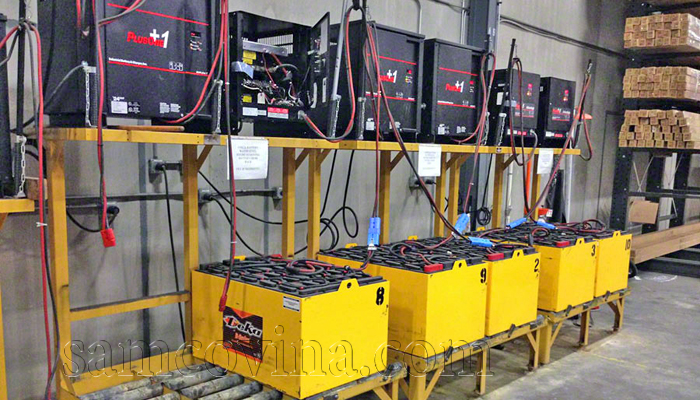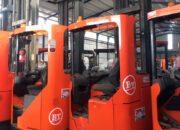Share important knowledge about forklift battery chargers
Forklift/Forklift Battery Charger is an industrial charger that is responsible for charging/charging forklift batteries as quickly as possible without shortening the life of the battery by overheating or overloading. Before the advent of modern forklift battery chargers, forklift operators/users were often responsible for setting the desired voltage and voltage difference to charge the battery, due to That is also the reason why the battery is often faulty, even in some unexpected cases, which can be dangerous to people. Today’s industrial chargers contain a complex network of tags and sensors that effectively remove humans from the charge/charge cycle. Nowadays, chargers have preset parameters to protect the battery/device to be charged from overcharging causing damage. The presets will actually stop accepting charge and show an error code if there is a problem with the battery instead of charging the battery to full power until it overcharges/overheats or in the worst case it will catch fire and cause explosion.
There are many options for industrial chargers from small portable chargers that plug into any wall outlet, to large wall-mounted devices that require a large capacity charger with dedicated leads. Current chargers allow users to customize specific charging cycles. This customization allows you to control everything from the amount of voltage, amperage, charging time and even the rate of full charge within a certain period of time. These controls give you more flexibility in battery/battery charging as well as ensure battery/battery life and performance.

Modern industrial forklifts/battery chargers may contain the following components:
The charger which has all the parts inside the charger such as:
– IC cards, large capacitors and very large transformers sometimes weigh 45-50kg. Sometimes up to four transformers can be found in some chargers and diodes. These transformers are responsible for converting AC current to DC current.
– A digital display shows the operator important battery statistics, the selected charge cycle and its status.
– Charging cable and control cable, transferring amp and high voltage to battery/battery.
So, what is a forklift battery charger?
Forklift battery chargers start at $500 for a portable charger plugged into a standard 120V power outlet, to around $3,000 for a charger that must be plugged into your electrical system by a licensed electrician. building. Prices vary depending on the details of the charger.
– Can you buy a used forklift battery charger?
Used forklift battery chargers cost about 40-60% more than new battery chargers. Based on the actual condition of each old charger so you can make an accurate decision.
– Can you rent a forklift and charger?
You can rent batteries and battery chargers together or separately. Price depends on battery weight/quality/life, battery specifications and desired charging parameters. When renting a forklift, find out “what is a forklift battery charger?” in order to avoid being lost in some cases..
When renting, or purchasing, a forklift battery charger, ask the following questions:
What is the voltage of the battery you want to calculate? The voltage of the battery must match the voltage of the charger.
How many phases (1PHS/3PHS)?
What is the AH (amp hour) rating of the battery?
What is the line voltage at the location where the forklift battery charger will be used? Charger and line voltage must match.
Is the battery charger stored in the refrigerator or cold storage? Shouldn’t the battery be charged below 32oF?







